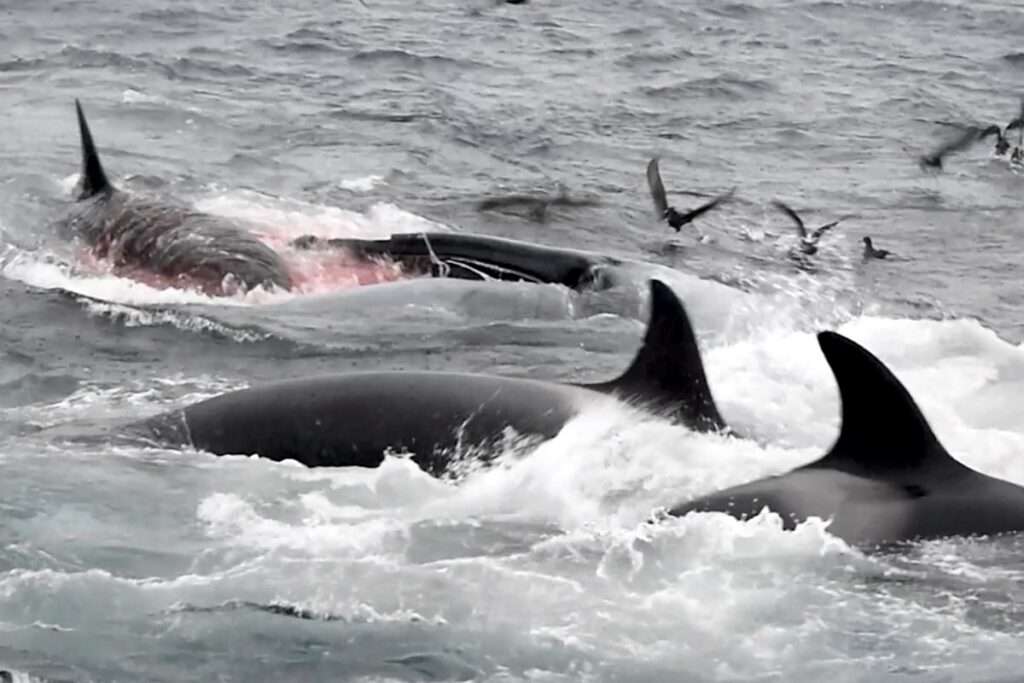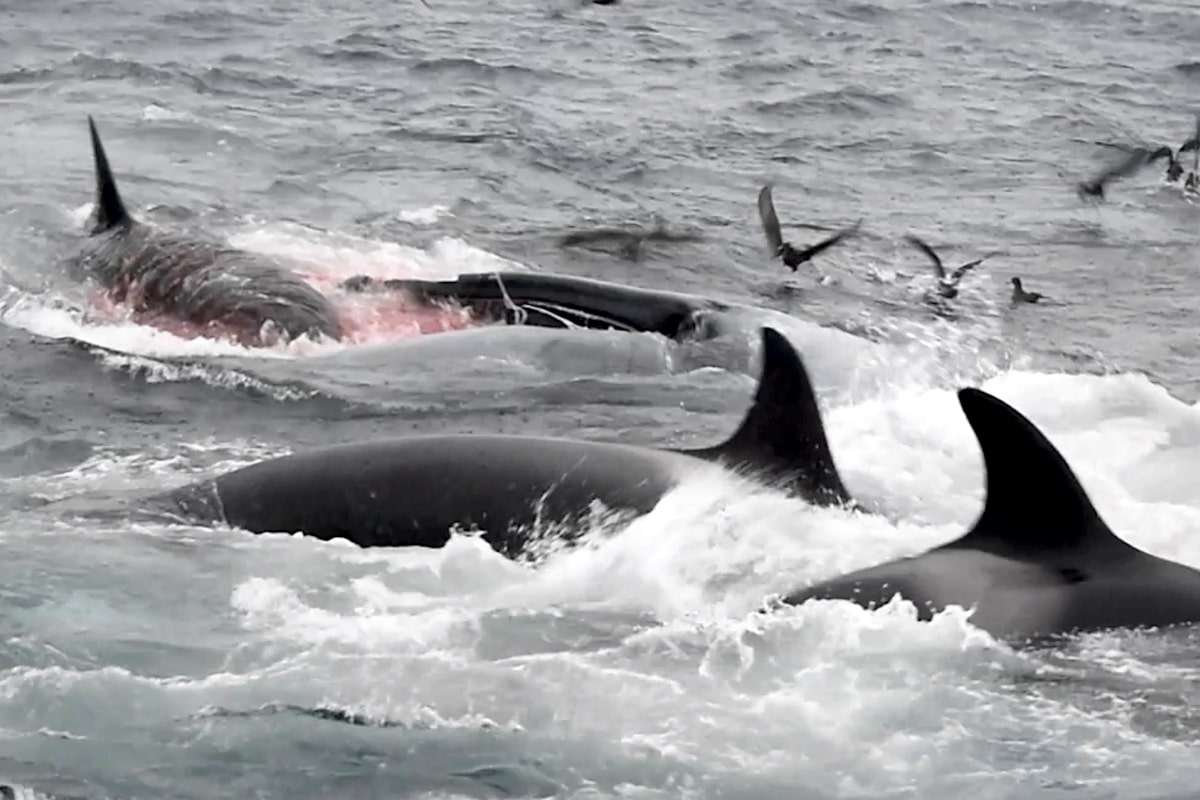
Predatory killer whales — orcas — have proven capable of attacking even blue whales, the largest animals of our time.
Orcas (Orcinus orca) can be called the most dangerous animals in the ocean. They are the largest of the dolphin-like animals, weighing up to 10 tons, they actively hunt large fish, shellfish and warm-blooded aquatic animals, taking advantage not only of their size and speed, but also extremely developed brain. Orcas are capable of attacking in packs, using highly sophisticated hunting tactics, depending on the target. New observations have shown for the first time that even blue whales (Balaenoptera musculus), the largest of today’s animals, which can weigh more than 150 tons, can fall prey to them.
Robert Pitman (Robert Pitman) from Oregon State University and his colleagues were working at sea near the town of Bremer Bay in southwestern Australia, from one of the ships carrying tourists for whale watching. The scientists note that the attacks involved packs of killer whales, mostly females, acting in concert. The scientists write about this hunt in an article published in the journal Marine Mammal Science.
The first attack of orcas was recorded in March 2019
A total of three such incidents have been recorded that ended in whale deaths: two in 2019 and another in 2021, the first of which was a large adult male. According to scientists, such attacks may previously have gone unnoticed because of the catastrophic decline in numbers of the victims themselves, which they experienced as a result of barbaric fishing, which continued until the second half of the twentieth century. It is possible that this difficulty in finding victims caused orcas to change their habits and forget their old skills of hunting ocean giants. Now those “habits” seem to be returning.
The first attack was the most spectacular. It was recorded in March 2019, the victim was a male 18-22 m long, attacked by a group of eight adult females and one male, accompanied by juveniles, who mostly stayed away from the dangerous fight. Scientists write that in 20 minutes of attacks, the predators tired the whale, which began to move in increasingly slow and short circles.
Time after time, orcas gnawed pieces of his body, causing severe bleeding, until, finally, three females, lined up “shoulder to shoulder” across the movement of the victim, rushed, together striking the victim in the side, while the other two attacked from the head. After another 10 minutes, one of them had already penetrated into the mouth of a half-dead whale and began to eat its tongue and other soft tissues. Soon to feed on the body of the victim gathered more than 50 orcas, as well as thousands of other seabirds and other animals.
In the second and third attacks, the predators preyed on younger and smaller whales, but, as in the case of the massive adult male, they primarily ate the tongue, the most nutritious part of their bodies. Scientists attributed the dominance of females in all attack groups to the need to feed their offspring.





